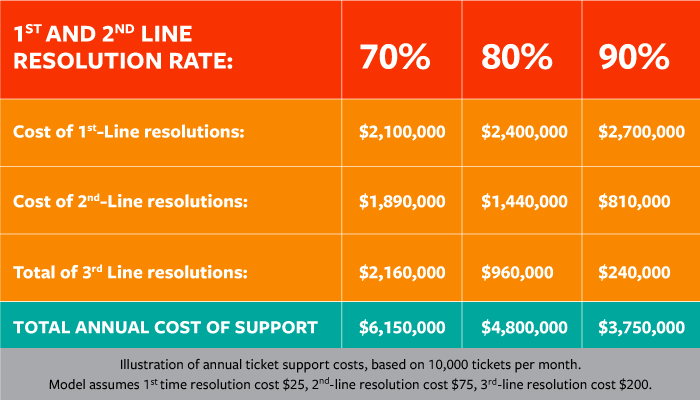In an ideal world, it might seem like there would be no need for service desk calls at all.
Realistically, we know that there will always be good reasons for customers to call. We still want to provide the best possible service. We want to do it effectively and efficiently.
The best possible customer experience ends with the issue resolved before the end of the call. It means a happy customer, and no further action required. That, of course, is why first-time resolution should be a priority measure of success within any service desk organization.
But there’s also a compelling business reason. Benchmark studies typically put the cost of a first-line service desk resolution, even in the best-performing organizations, at between US$20 and $30. If that ticket escalates to the second line, it’s usually several multiples more expensive.
The cost of a third-line team’s time is much higher still. After all, they are probably being diverted from innovation and development activities, which add business value.
In fact, it’s easy to model the business case for a high resolution rate, as this example shows, for an organization processing 10,000 tickets per month:
A smarter service desk, therefore, invests time and commitment to achieving the best possible fix rate.
A key tool for a smarter service desk in driving better resolution rates is the use of pre-existing knowledge. But experience with service desks all over the world has demonstrated a recurrent challenge: Service desk agents tend to be measured by more than just their fix-rate. Calls need to be answered, so the time taken to handle each customer’s issue is frequently a pressure area, too.
When a service desk agent is under pressure on both metrics, they face what one agent described to me as “a gamble:” Do they search for knowledge or is their time target more pressing?
When making improvements to the service desk experience by upgrading your software, there are three best practices to target:
- Provide a single field for call-logging. Eliminate the long form and choose intelligent software to manage the hard work of sorting customer information and problem statements.
- Be sure your software package will also scan the system for current outages and similar tickets in parallel with each customer call.
- Bring knowledge management to the service desk agent in real time, so they do not have to decide whether to search for it.
Ensuring that your service desk software includes these capabilities will aid in faster call resolution times and lower costs for your organization. Best of all, a smarter service desk leads to happier customers.








